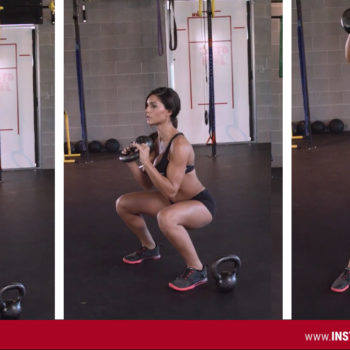Ultimate Fat Burning Guide: Part 1

You’ve decided that you want to strip some fat and are now ready to start your diet and activity program.
The process of fat burning isn’t as easy as some of the infomercials will make out though. There’s no special equipment needed here, just hard work and clever planning.
Many people still believe that there are industry secrets – hidden blueprints that only the pros know about. Unfortunately there aren’t. But there are ways to optimize fat loss and you’ll find them in this guide.
Here we’ll tell you all about them. It’s a sure-fire way of stripping body fat.
#1. Set Your Goals
The most important starting point with any fat-burning plan is to set your goal. Where do you want to be and when for? It is important to plan this so you can monitor progress and adapt as necessary. Goals without time frames often have no urgency about them.
Record what you want to achieve and by when. Once you’ve done this you can begin to construct some short-term goals that will keep you on track towards your end target. Whilst these can be adjusted along the way if you are over- or underachieving, they should help steer you in the right direction.
Don’t just plan your goals around weight loss – consider taking measurements of your main problem areas as well. This could include measurements of the waist, hips, legs and arms for example. If you have access to one, you could also consider a body fat analysis machine as well.
Self-set goals rather than assigned goals have been found to be most effective [1]. Just make sure they are realistic – if you are unsure than be slightly more conservative in your planning.
#2. Calories In, Calories Out
It is essential when trying to strip fat or lose weight that you achieve a calorie deficit. What this means is that you burn more energy in a day than what you take in from food.
Whilst there are theories that calories might not be as important as once thought, at present the overwhelming evidence points towards its reliability.
There are a number of different equations and calculations that you can use to give you an idea of your daily energy requirements and a number of apps and trackers that will help you on your way. Our daily calorie calculator uses the most reliable equation – just make sure you are truthful about the amount of physical exercise you undertake as this can effect your overall requirements.
Aim for no more than a 500kcal deficit from your daily energy requirements to begin with and see how you go from there. You’ll find that fat loss works very much on a ‘law of diminishing returns’ – the more fat you have, the quicker and easier it is to lose it. You’ll just need to adjust your numbers as you go along.
The quickest way to achieve a deficit is to eat less – whilst it is important to exercise, it is harder to exercise 500kcal away than it is to just not eat that amount. For that reason, exercise should be included to help improve your fitness and improve lean body weight, not to address energy balance.
#3. Hit The Weights
There are an unbelievable number of benefits you’ll get from including weight training in your fat loss program – these range from decreased risk of injury, to reduced risk of long-term illness. The most important point here though is that it burns fat.
The evidence points to the fact that your metabolic rate is controlled by your fat free mass [2] – what that means is that the more muscle you have, the more effectively you are at using fat as energy.
Studies have shown that even weight training on its own can help women lose fat mass. One study [3] found that in a group of 60 volunteers, 15 weeks of strength training helped the women to gain 0.89kg of muscle and lose 0.98kg more than control volunteers.
Similar results were seen in a study published in the British Journal of Sports Medicine [4]. In this study, 27 women were asked to complete a 14-week weight training program consisting of strength-based exercises.
Results showed a significant decrease in body fat as well as cholesterol, and a significant increase in strength. This suggested that resistance training had a favorable effect on lipid profile and body fat percentage.
Interestingly body mass remained unchanged showing that weight on the scales didn’t tell the full story.
Be aware that females do not have the potential nor the hormones to grow in size like males. However, by incorporating weight lifting into your program you can develop a physique that is optimized for shredding fat.
#4. Optimize Your Diet
Whilst we recommend a calorie deficit to start your fat loss goals off, you can further accelerate the process by manipulating the types of foods that make your total calories up.
The perfect diet is one that you can adhere to, and the one that works for you. Other than that, everything else is down to trial and error.
Once you are consistently in a calorie deficit you’ll start to notice some differences to your shape. Once you can maintain this, the next stage is to look at what type of foods work best for you.
Although you can play around with the ratios, it is important to try to maintain a relatively high protein intake throughout your program, as it is the most satiating macro of the three. This means that by adding protein to each meal you’ll keep fuller for longer – this will help you to maintain a deficit and will also help to increase your lean mass levels. Additionally you’ll increase your metabolic rate will increase and your fat mass will decrease [5].
Common starting points for macros are 30-50% carbs, 25-35% fats and 25-35% proteins. Again though, this is just a guide and may need tailoring to your specific needs. Medical needs or existing illness may require you to tweak the diet to meet your individual needs. Consult a medical professional if unsure.
#5. HIIT The Gym
Whilst it is important to include weight training in your fat-burning plan it is also important to include cardio – in particular ‘high intensity interval training’.
HIIT is a method of cardio that involves repeated bouts of short, high-intensity work followed by periods of recovery. Although the timings and ratios between work and rest may differ, research suggests that work intervals of 30 seconds to several minutes and rest intervals of 1-5 minutes work best [6].
This method of exercising is intense but has been found to be particularly beneficial for metabolic health, including fat loss.
A study by Talanian et al [7] found that 7 sessions over a 2-week period improved a number of hormonal, metabolic and cardiovascular responses. The most important message here is that the HIIT protocol significantly increased the number of muscle mitochondria – specific parts of cells that can increase the use of fatty acids.
Likewise, a study from the University of Guelph, Canada [8] found that when a group of untrained volunteers completed a 3-day a week, 6-week program of HIIT training, their capacity to use fat as energy increased by 60%.
Bear in mind that as a beginner you may find this way of training extremely hard and we would only recommend it if you are injury free and have a clean bill of health.
Summary
We’ll be following this guide up with Part 2 very soon which will provide even more fat burning tips for you. For now all you need to do to start your fat burning journey off is follow these five tips.
Good luck and we’ll see you in Part 2.



